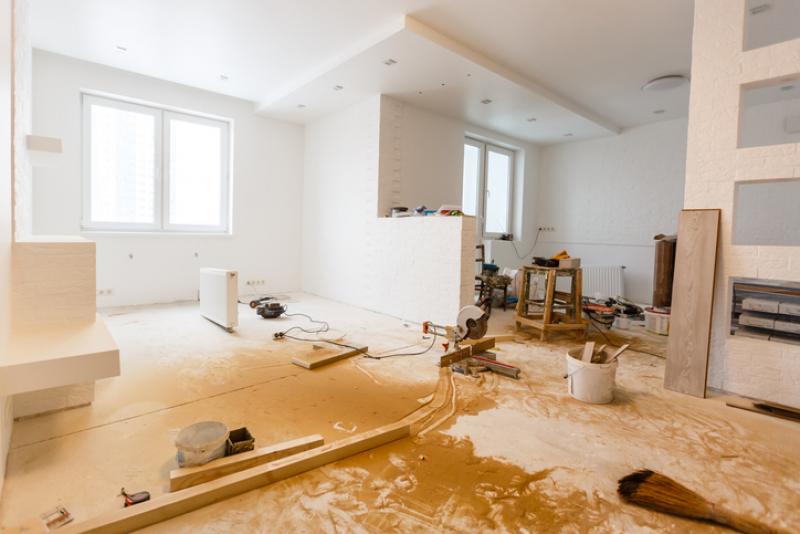
A lot of older buildings weren’t built to maximise space, so you tend to get a lot of needless walls boxing things in. But removing them could transform your living space.
Here are the main things to keep in mind before you start knocking down walls and remodelling.
Is the internal wall load-bearing?
First off, you need to establish if the wall you’re thinking of demolishing is a solid structural wall, just a partition or a ‘stud’ wall.
Sanjay Nairi, CEO of Refurb-It-All – which is a member of the Federation of Master Builders – has some advice for the best way to proceed.
“First of all, give the wall a tap. If there’s a dull sound, it’s likely to be solid. But a hollow sound is an indicator of a stud wall.”
“This isn’t necessarily conclusive though. For example, a plywood stud wall may not sound hollow.”
“So next check upstairs to see if anything is resting on the wall. If there’s a solid wall in line with it upstairs, or joists resting on it in the attic, that also suggests that the wall downstairs is load-bearing.”
Consulting floor plans should also give you a better idea of whether it should be removed or not.
If in any doubt, it’s best to defer to your builder or structural engineer. They should be able to quickly work out how best to proceed.
Should I remove a stud wall myself?
This will depend on the job complexity, and also how handy you are.
If you’re 100% sure that the wall is a stud wall, then you have the option of removing it yourself if you’re confident with your DIY skills.
But this can be further complicated if there’s pipes or wiring in the wall. It’s best to remove the plasterboard and expose the inside of the wall before deciding whether to demolish it yourself.
If there are any electric sockets or radiators that need to be rerouted or removed, you’ll definitely want to get a pro in.
The wall is load-bearing. Do I need planning permission or a structural engineer?
If a wall is load-bearing, it doesn’t mean it can’t be at least partly removed. However, you’ll want to consult a professional rather than attempting it yourself.
You don’t usually need planning permission to remove internal walls, but you’ll likely need buildings regulations approval to alter a structural wall.
In this case, you’ll need to get a structural engineer to examine the property and give a report before building can proceed.
You can expect to pay around £100 an hour for a structural engineer in 2024, but this will depend on the scope of the work needed.
Usually, you’ll need to install beams (also known as reinforced steel joints) to remove a structural wall.
Costs do begin to stack up, but at least discovering a load-bearing wall doesn’t mean you’re out of options.
Other things to consider
You do need to consider a few things when reconfiguring your internal space, and these can sometimes be costly.
- Will radiators be affected? If so, budget around £200-£300 for the cost of replacing or moving them.
- Will you need to remove or add electrical points or light switches? This is likely to cost in the region of a couple of hundred pounds, depending on how far the wiring needs to go.
- Will it affect the floor? Sometimes you might have to take up floorboards. Also, you might need the floor levelled with screed, or a step put in if the floor’s height on each side doesn’t match.
In addition, although you’re under no obligation to do so, it’s nice to tell your neighbours if you’re having work done.
This is especially true if there’s going to be noise and tradespeople with equipment frequently accessing the building.
Do I need to tell my insurer before I start remodelling work?
Whether you have home insurance or landlord insurance, don’t forget to tell your insurer before you do any building work or renovation.
You don’t need to let us know about any routine maintenance or decoration.
Renovating your home can be a big job, don't forget that there can be lots of space to be found in the garage too!


